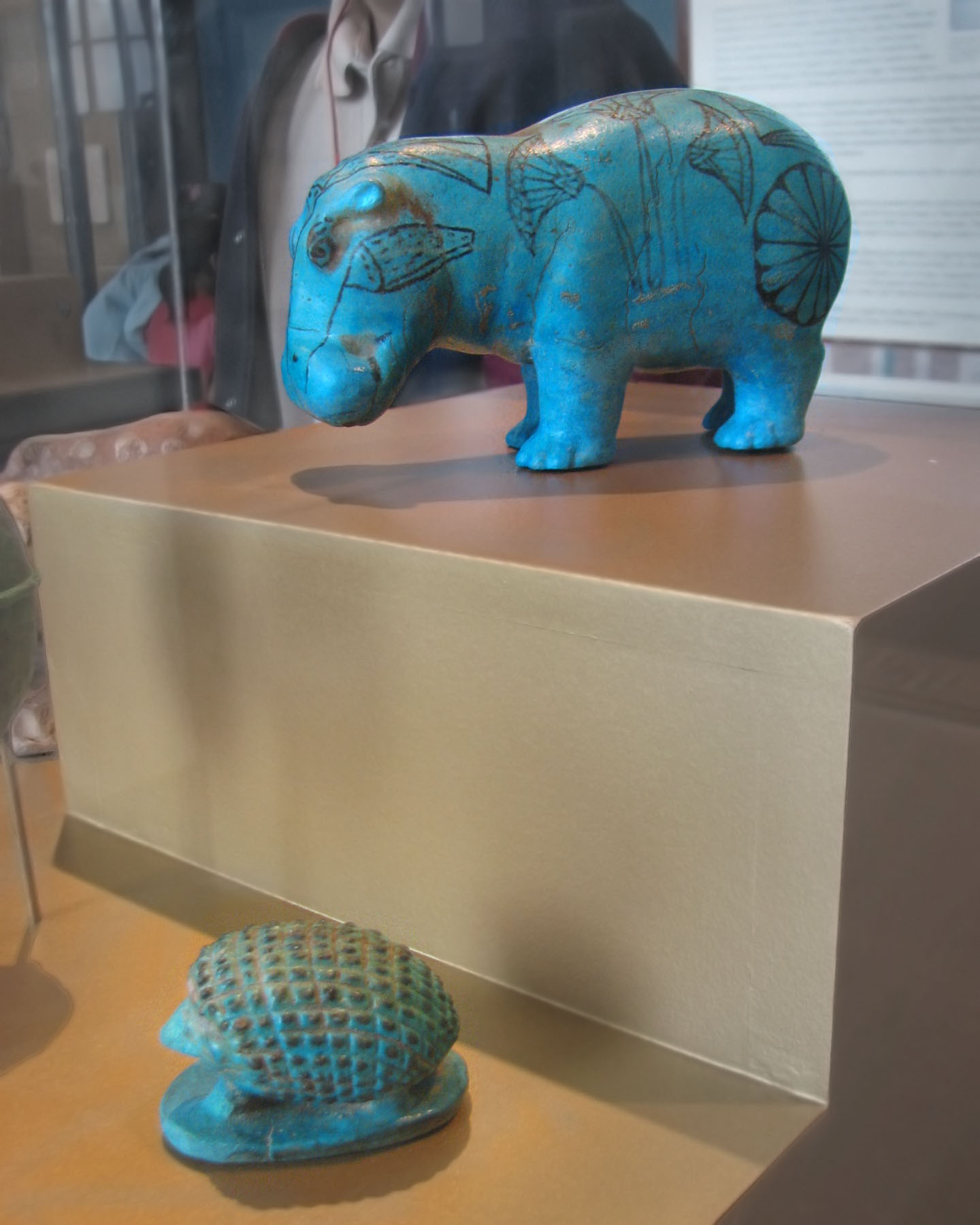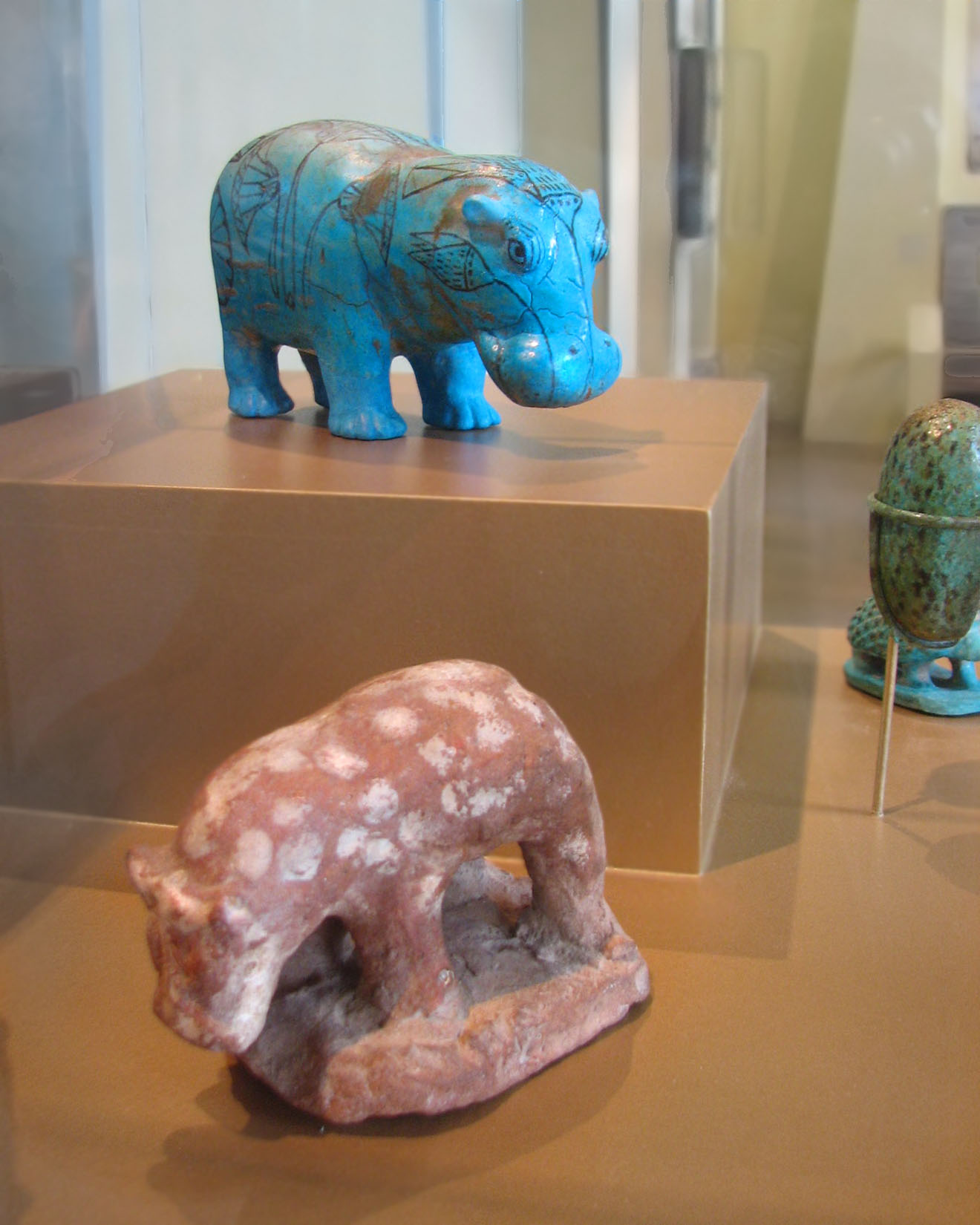
Two Hippos
Painted Faience
Middle Kingdom-Second Intermediate Period, ca. 1938-1539 B.C.E.
Provenance not known
Top hippo: Brooklyn #L48.7.19, Collection of Robin B. Martin, 4 1/4 x 6 9/16 in. (10.8 x 16.7 cm)
Lower hippo: Brooklyn #70.93.2, Charles Edwin Wilbour Fund, 3 9/16 x 2 3/4 x 4 15/16 in. (9 x 7 x 12.5 cm)
Hedgehog
Faience, 1 5/8 x 1 5/8 x 2 13/16 in. (4.2 x 4.1 x 7.1 cm)
Middle Kingdom, Dynasty: XII Dynasty-early XIII Dynasty, ca. 1938-1700 B.C.E.
From Deir el Nawahid, southeast of Abydos
65.2.1, Charles Edwin Wilbour Fund

Hedgehog Rattle
Painted Faience, 1 x 2 5/8 x 1 3/8 in. (2.5 x 6.7 x 3.5 cm)
Middle Kingdom, XII Dynasty-early XIII Dynasty, ca. 1938-1700 B.C.E.
Provenance not known
Brooklyn #59.186, Charles Edwin Wilbour Fund


